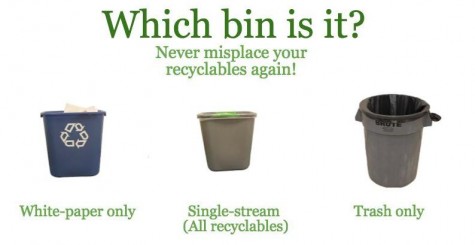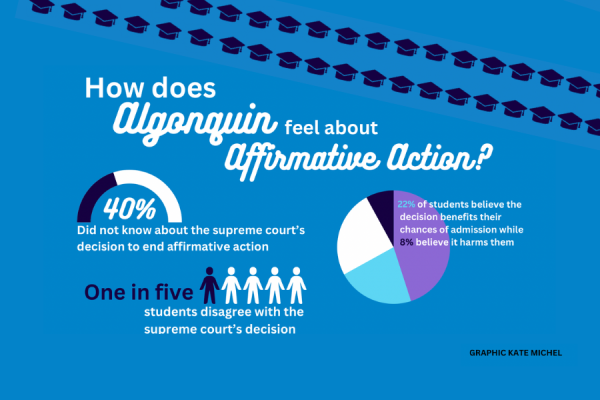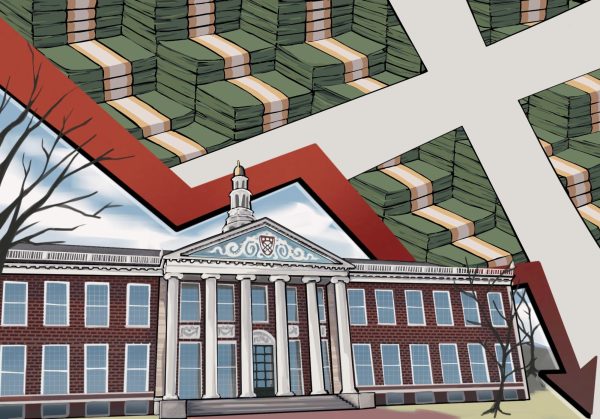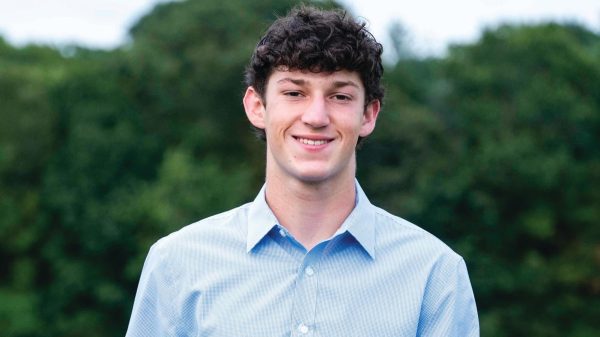Sustainability is the way to be
Harbinger’s guide to Algonquin’s history of recycling and eco-friendly efforts
It is easy to forget about the effect humans have on the Earth. Decisions that seem trivial such as leaving a light on or keeping a faucet running while brushing your teeth can be cumulatively detrimental to the environment.
Recently, there have been school-wide initiatives, including styrofoam recycling and single-stream recycling, to decrease the school’s waste and increase its eco-friendliness. These approaches have had their successes and also their downfalls, but spreading the knowledge of environmental consciousness to the student body encourages greener lifestyles.
Recycling
The white-paper recycling has taken care of by the AP Environmental students and their teacher Christina Connolly for almost seven years. Decorated in their signature green pinnies, the students visit classrooms to empty the blue recycling bins once every two weeks. The paper is then put into the white-paper only dumpster outside the World Language hall and collected by Abitibi Paper Retriever recycling trucks.
In addition to collecting white-paper, the Environmental students also sift through the blue recycling bins, sorting out the non-recyclables and trash from the paper.
“So, as they collect the bins from the classroom they literally have to pull out the trash and anything that is not white paper for recycling,” Connolly said.
“A lot of times, there is a lot of other stuff that people put in the recycling bins like water bottles, trash, tissues, and those W.B. Mason printer paper covers that are made of paper but are not actually recyclable,” AP Environmental student senior Daniel Fier said. “We have to filter that stuff out before we put it into our big collection bin.”
Environmental students like Fier, alongside Connolly, work with the school to spread the knowledge of recycling and its importance.
“Recycling in general is so important because we have so much waste building up and no place to put it and burning it is very dangerous,” Connolly said. “It’s better to reuse the materials than to make new ones.”
“It’s so hard to make a whole school go greener,” AP Environmental student and senior Frances Palmer said. “But recycling well is the first big step.”
According to Connolly, students, faculty, and environmentalists can go much farther than just recycling.
“It’s very important that we recycle but what’s more important than recycling is not making the waste to begin with,” Connolly said.
“It’s far better to not make the trash than recycling it. It’s better to reuse it, of course, but it’s [even] better to avoid making that waste altogether.”
For example, Connolly suggested instead of using disposable water bottles, keep one to refill and reuse over and over again. This reduces the carbon compounds emitted into the air caused by transporting recyclables to and from the recycling plants thus reducing a world-wide carbon footprint.
Styrofoam
Styrofoam recycling had been implemented in the cafeteria to create a more cost effective and environmentally friendly way of reusing lunch trays.
However, according to Principal Tom Mead styrofoam recycling is more labor intensive, thus leading to its lack of success. The trays not only have to be gathered, but also loaded onto a truck and transported to ReFoamIt, a styrofoam recycling plant in Leominster.
“There is a transport issue around that,” Mead said. “You have to package it up and load it onto a truck and then that truck takes it to the recycling plant…what may have been problematic about styrofoam is just the logistics. How do you get the trays and how do you package them and how do you get them to the plant?”
Even though the process is not currently in use, styrofoam recycling was both new to the school and new to the environmental community.
“But it’s not quite as simple and straightforward as say bottles and cans being recycled or newspapers being recycled,” Mead said.
“There are more developed streams for those things than there is for styrofoam.”
However, introducing lunch trays in the cafeteria that are both eco-friendly and cost effective is a complex matter. Even though plastic trays are reusable, Mead explains how the cost of water and labor increases. With recycled styrofoam or cardboard trays, the cost of transporting the materials to recycling plants increases. Mead was unable to provide specific details about cost and savings.
“I know they [the cafeteria] have that initiative to cut back with the plastic trays and recycling those which I thought was cool but when you think about it, it’s a very multifaceted issue,” Fier said. “Just as an example, say you were to cut back on the styrofoam use then you use plastic trays instead but you need more water to wash those trays.”
“And of course styrofoam and paper, they are throw-away stuff or recycled stuff but the tray is washable,” Mead said. “But you have to use water and water has a cost, soap has a cost, and having the facility to wash, sanitize, [and] dry trays for example is not insignificant… You have to build that into your cost.”
As explained by Mead, being penny-wise is key component of what material is used for the lunch trays. The cost of the styrofoam outweighed the cost of the plastic trays.
“One thing that we are smart to reckon with is the cost to recycle,” Mead said. “It’s good to know what that cost is because that has to be considered in the choices that we make around the materials that we would use.”
Single-Stream
The single-stream initiative was implemented in 2014 by alumnus and former Environmental Club president Ian Rizzitano and Facilities Manager Michael Gorman. The pair, alongside the Environmental Club, began this new approach to recycling to reduce the amount of work the recycling plant does and to have a more hands-on experience to increase awareness and reduce waste.
“Basically, we were using our contractor and we were putting it all in one bucket and the contractor was sifting it out for us,” Gorman says. “The students wanted to do more…We were green, all our trash went into one bin and went to a facility that separated it [for us] but the students wanted to do it from the school.”
Single-stream concept is much simpler than it seems.
“Single stream is when you put all your different recyclable things in the same container, like the same barrel, and it all gets sent to the recycling plant all mixed together and it gets sorted out at the recycling plant,” Connolly said. “[However] at Algonquin, the typical [single stream] recycling bin is taken care of by the custodial staff.”
The janitorial staff sort, sift, separate and take care of contaminations. A contamination occurs when something non-recyclable such as an apple core is put into the single-stream bins (which are marked with green tape). This creates more work behind the scenes for the janitorial staff.
“When you do more, when you add more tasks, there is a more work,” Gorman said. “Yes, it does add a little bit more to their [the second shift janitorial staff] labor but it’s for a good cause. It’s for the environment.”
Single-stream was supposed to create a easier way to encourage the student body and faculty to recycle by providing one bin to put all the recyclables in.
“The reason why, nowadays they [recycling plants] do single-stream, is because people, as individuals, are too lazy to separate their plastics and their paper and their glass on their own,” Connolly said. “So now instead of having individual people do it, we now have the processing plant do it, so it takes less work for the individual person to do it, making them more apt to recycle.”
However, despite its simplicity, single-stream is still not widely enforced at Algonquin. According to Fier, a lack of understanding the process may be the reason why.
“I, personally, don’t [think single-stream is enforced well],” Fier said. “I think it’s a really good concept but I think if we want to implement it we need a little more educating the general public about what it entails and the details of it.”
“I think overall, we had about a 70 percent participation at the starting of the school year and we are doing well,” Gorman said. “We are not at 100 percent perfect; I think we always have room for improvement, but let’s say 80 percent [of the time] it’s going well and working well.”
One of the biggest goals of the approach was to not only educate the public but also encourage them to recycle on their own.
“It’s the right thing to do, to continue the education for students. It’s the right thing to do to show the students [recycling] so they can take it home and do it in their environment,” Gorman said.
The Future
New approaches including using cleaning products that are less harmful to people and the environment and being more energy and water conservative are being introduced to Algonquin within this and next year.
All of these actions are being taken to improve the school’s “green program.”
“Our green program says that we are going to use environmentally friendly cleaning products,” Gorman said. “We did a lot of research as a team and we found a lot of environmentally friendly products that do a good job.”
In terms of water conservation, new technology will be introduced to bathrooms to reduce water use.
“This April, since water is so expensive, we are doing a program and basically we are doing water saving conservation,” Gorman said. “This is going to reduce about 30 percent of water use in certain places. Water is precious now more than ever.”
Another green initiative is the possibility of a solar-powered schools. At a school committee meeting on February 24, Superintendent Christine Johnson discussed the possibility of the installment of solar panels.
“I think that it’s going to happen sometime, someway,” Mead said. “For the towns and the schools to come together and do something about energy costs and I’m thinking it could be solar…”
Also, the Environmental Club is in the process of setting up the plots of vegetables and fruits in the Serenity Garden. This process not only saves money by growing their own ingredients but also prevents harsh chemicals from reaching the plates of students and community members.
“We are currently trying to get our green house set up for planting our vegetables and flowers in the Serenity Garden,” Environmental Club adviser Zbigniewa Giegucz said. “The food and flowers that are harvested and picked from our gardens are used in our Nutrition and Culinary Classes. We also shared both the food and the flowers with the the Northborough and Southborough Senior Centers.”
In 2012, the school received a Energy Star rating of a 94 percent in efficiency of energy conservation in comparison to schools the same size. Custodian Charles Richardson explained that part of this was because of how well the school has been maintained.
“A huge part of my job is that everything runs smoothly,” Richardson said. “The better things work, the more environmentally friendly they are. If the machinery works well then we lose less electricity whether it’s electric or through gas.”
All these programs are part of a school-wide effort to become more eco-friendly, to educate the student body and faculty about the environment, and to encourage people to recycle outside of school in the most cost-effective way.
“The biggest precious resource is our budget because what we save here [in energy and water bills] we can put back into your education,” Gorman said. “It’s about your education, it’s about your environment, and we are trying to do the the right thing in facilities to give you a world class learning environment, give you the tools to do that, and keeping it clean. If you notice a place is clean, well-operated, and well-maintained when you go around that’s because there’s a whole crew that really cares about Algonquin and the students.”
10 ways to be more eco-friendly
1. Turn off your computer at night:
Simply by turning off your computer instead of keeping in it on sleep mode saves up to 40 watts of energy a day, which adds up to $14 dollars of savings a year.
2. Carpool:
Carpooling means that less cars and other vehicles are on the road at the same time. This reduces the amount of carbon pollution and keeps the air cleaner. It’s also a great way to make new friends or to bond with old ones.
3. Use reusable water bottles:
Did you know that almost 90 percent of plastic water bottles are not recycled? Use reusable water-bottles and fill them with tap water so you don’t have to wait nearly a thousand years for the plastic ones to decompose.
4. Use reusable grocery bags:
Similarly to plastic bottles, plastic bags take nearly a thousand years to decompose and end up in the oceans as well as food for aquatic animals. Do the seals a favor, use reusable grocery bags. Grocery stores usually give you a discount if you use reusable bags.
5. Use reusable coffee mugs:
Everyone loves a good cup of Dunkin Donuts or Starbucks coffee, but you know what’s even better? Making the same coffee at home and bringing it to school in a reusable coffee cup and stopping styrofoam and plastic waste from piling up. Starbucks gives you a discount if you use one of their reusable cups.
6. Recycle old cell-phones:
Excited for your next upgrade? Don’t let your old ways go to waste (literally). There are plenty of organizations that will take your old cell phones which will keep the toxicity of cell phone batteries from entering the environment.
7. Brush without keeping the water running:
You could save up to five gallons by keeping the water off when you brush your teeth. We could potentially save up to 1.5 billion gallons of water a day.
8. Donate old clothes and shoes:
Donating clothes and shoes is not only the right thing to do but it is also environmentally friendly. It reduces the amounts of pollution and greenhouse gases released into the air through the manufacturing process.
9. Buy locally grown food:
Buying locally grown food from farmers markets not only supports your local economy but also lessens the air pollution caused by transporting food over land and water.
10. Plant a tree:
Make the earth greener and the air fresher.
A donation of $40 or more includes a subscription to the 2024-25 print issues of The Harbinger. We will mail a copy of our fall, winter, spring and graduation issues to the recipient of your choice. Your donation supports the student journalists of Algonquin Regional High School and allows our extracurricular publication to purchase equipment and cover our annual website hosting costs.
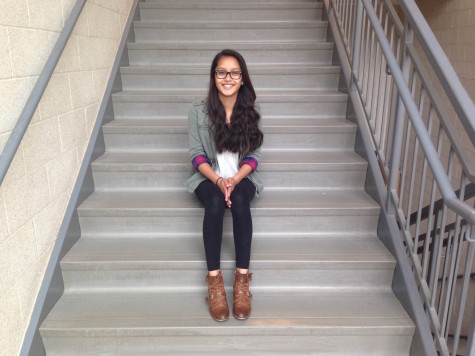
My name is Riya Pujari and I became a member of the Algonquin Harbinger my freshmen year. I stopped for a little while and rejoined my sophomore year when...



